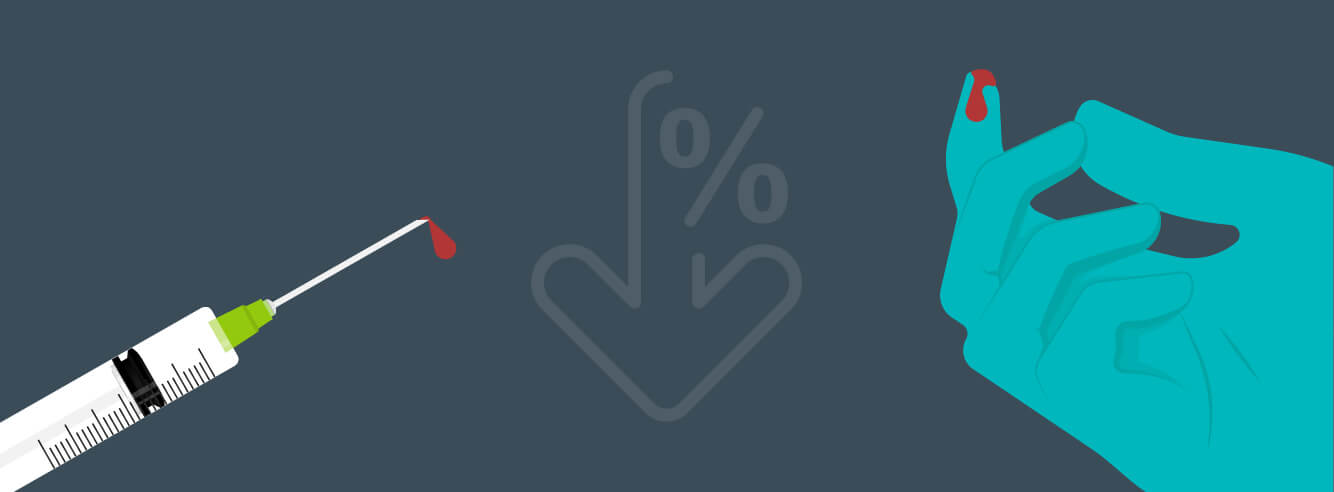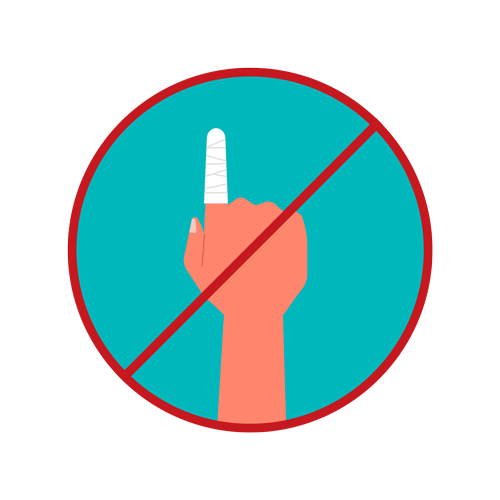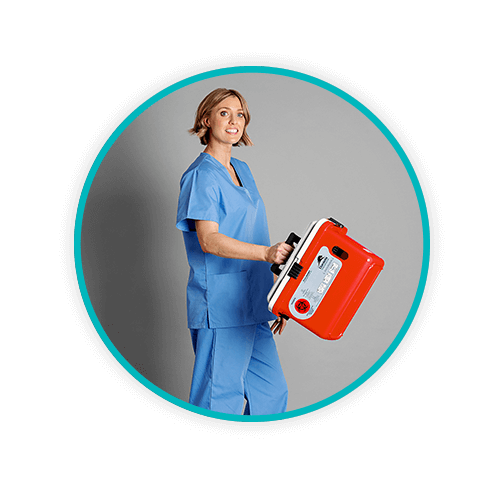5 Ways to Reduce the Risk of a Sharps Injury

Despite advancements in sharps designs and technologies, sharps injuries continue to affect healthcare professionals in a variety of medical care scenarios. Sharps injuries carry a huge risk of exposure to serious medical conditions including Hepatitis B and C, HIV, AIDS, and others.
Continued attention is required of all healthcare providers when it comes to reducing the risk of sharps injury. Daniels Health is devoted to not only designing products that improve sharps safety collection and disposal practices, but providing guidance on methods and practices that can reduce the risk of a sharps injury occurring in your facility.
TOPICS WE WILL COVER:
1 / What does recent data say about needlestick injury?
2 / Five ways to reduce the risk of sharps injuries
3 / Daniels Health and needlestick prevention

What does recent data say about needlestick injury?
Two decades have passed since the passing of the Needlestick Safety and Prevention Act and its inclusion as an amendment to the Bloodborne Pathogens Standard. In spite of increased awareness regarding sharps safety practices to prevent against accidental needlestick injuries, they still continue. Manufacturers of medical devices have developed products such as “safe needles” to aid in this endeavor, with mixed results. A 2020 publication of the International Safety Center (Moving the Sharps Safety and Health Care Agenda Forward in the United States) provides data from two primary sharps injury surveillance systems that have been accumulating data on sharps injuries for the past two decades. They include:
- EPINet Sharps Injury Surveillance Research Group (EPINet) in coordination with the International Safety Center
- Massachusetts Sharps Injury Surveillance System (MSISS) overseen by the Massachusetts Department of Public Health
In 2018 alone, these networks recorded over 4,000 sharps injuries from the two surveillance systems. As with most years, nurses suffered the plurality of injuries in hospital settings, primarily occurring in exam and inpatient rooms.
However, the study determined that the majority of sharps injuries occurred in operating room scenarios, in those instances primarily among physicians.
A large percentage of injuries that occurred within the OR scenario were to those who did not originally handle the devices, but who came into contact with them during disposal processes. This group includes technicians, laundry services, sterile processing employees, as well as environmental and janitorial services.
Five ways to reduce the risk of sharps injuries
Focusing on prevention, here are some suggestions for reducing sharps injuries.
#1 – Increase usage of sharps devices with sharps injury protection features. The National Institute for Occupational Safety and Health (NIOSH) recommends the use of safe medical devices to reduce risk of needlestick and sharps injuries. Such devices include retractable needles and “needleless” systems. However, these features must be activated immediately, and safe disposal processes must be followed to reduce the risk of injury, not only at the point of origin, but as that device moves through the waste stream. The Centers for Disease Control and Prevention (CDC) notes that approximately 25% of sharps injuries occur to non-users of devices.
#2 – Reduce hand-to-hand passing of sharps in surgical scenarios, instead using a “neutral zone” for transfer of such devices when applicable and available.
#3 – Increase and improve aspects of employee training in the use, handling, and disposal of all sharps including those with safety features. Hands-on training is essential to improve familiarity and competence in such processes. Any employee who is involved in handling sharps in any way should also be evaluated in the knowledge and handling procedures of such devices. Anyone using sharps – even those with safety features – must be able to demonstrate competency in their use. In healthcare scenarios, policies can be put into place that require sign-off on completion of such training. Simulation lab practices that encourage hands-on training should be made available to all staff members and ancillary personnel that have the potential to handle or come into contact with devices, including vendors.
devices. Anyone using sharps – even those with safety features – must be able to demonstrate competency in their use. In healthcare scenarios, policies can be put into place that require sign-off on completion of such training. Simulation lab practices that encourage hands-on training should be made available to all staff members and ancillary personnel that have the potential to handle or come into contact with devices, including vendors.
#4 – Sharps disposal procedures should be routinely evaluated to ensure proper placement of sharps containers as close to the point of use as possible. Doing so can reduce the risks of sharps injuries. Sharps containers should be placed at shoulder height, with safety features that reduce exposure of fingers and hands with discarded needles in such containers. Containers should be fitted with a tight lid. All employees should be trained and familiar with sharps container disposal procedures in reducing accidental needlestick injury.
#5 – Routinely scheduled reviews of the facility’s sharps injury log can aid in assessing areas or departments that require additional education or improvements in training, products, or processes. As new SIP devices become available, each and every employee utilizing those devices should have hands-on experience with them.
Training is a valuable asset in reducing the risk of sharps injuries in all care scenarios. It’s not enough to have written standards and guidelines. Hands-on training is more effective in familiarizing such personnel with sharps usage and proper disposal practices of sharps regardless of setting.

Daniels Health and Needlestick Prevention
Daniels Health has decades of experience in healthcare waste management including safe sharps disposal practices. We provide a vast number of resources, products, and guidance in federal and state laws when it comes to sharps disposal. For more information on needlestick prevention strategies, sharps container placement, and guidance in regard to regulations for sharps use and disposal, contact us today.
Let's Talk!
Your time is valuable, and we don’t want to play hard to get. You can either phone us directly on the details listed on our contact page, or feel free to fill out this short form and one of our team members will get back to you as quickly as possible.
